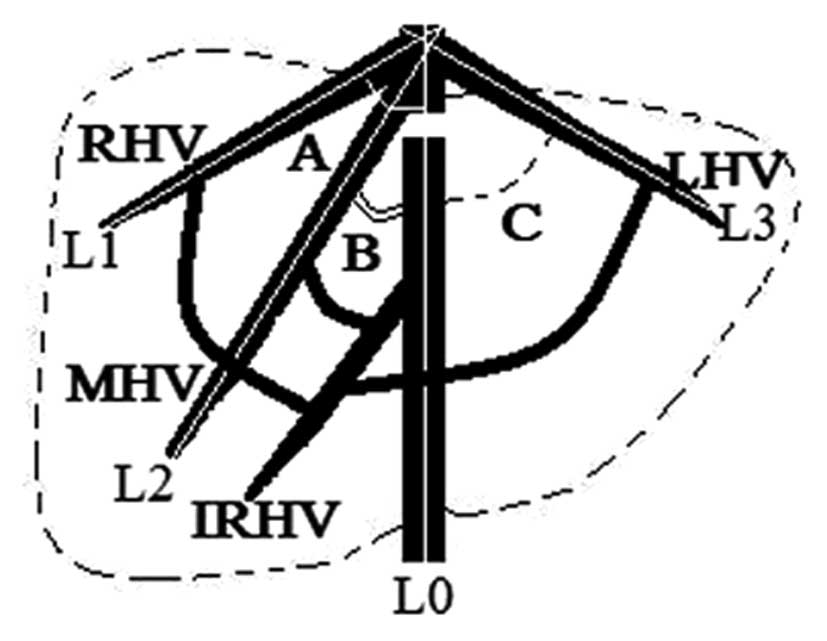Diagnosis of the cavo‑hepato‑atrial pathway in Budd‑Chiari syndrome by ultrasonography
- Authors:
- Yong‑Hao Gai
- Shi‑Feng Cai
- Hui‑Li Fan
- Qing‑Wei Liu
-
View Affiliations
Affiliations: Department of Ultrasound, Provincial Hospital Affiliated to Shandong University, Jinan, Shandong 250021, P.R. China, Department of Radiology, Provincial Hospital Affiliated to Shandong University, Jinan, Shandong 250021, P.R. China, Department of Ultrasound, Heze Municipal Hospital, Heze, Shandong 274000, P.R. China
- Published online on: July 4, 2014 https://doi.org/10.3892/etm.2014.1828
-
Pages:
793-796
Metrics:
Total
Views: 0 (Spandidos Publications: | PMC Statistics:
)
Metrics:
Total PDF Downloads: 0 (Spandidos Publications: | PMC Statistics:
)
This article is mentioned in:
Abstract
The aim of this study was to investigate the ultrasonic features of the cavo‑hepato‑atrial pathway in Budd‑Chiari syndrome (BCS), by which blood is drained from the occluded inferior vena cava (IVC) to the right atrium via hepatic veins. Ultrasonograms from 11 patients with BCS with cavo‑hepato‑atrial pathways were retrospectively studied. Doppler ultrasound was used to observe the direction of the flow and measure the velocity of the blood‑draining vessels. Blood flow in the draining vessels and the collaterals was shown as blue, red or bicolored depending on whether the flow direction was away from the transducer, towards the transducer or both. For measurement, the Doppler angle between the axis of the Doppler beam and that of the vein examined was always <60°. Ultrasonography was performed 1‑2 weeks prior to digital subtraction angiography (DSA). All patients were confirmed by DSA. Membranous and segmental occlusions of IVCs were observed in seven and four cases, respectively. Blood flow from the IVC reversed to the hepatic/accessory hepatic vein, continued through the dilated intrahepatic collaterals, onward to the other hepatic vein and finally to the right atrium. The majority of the inlets (8/11) of hepatic veins above the occlusion were narrow compared with the dilated distant parts of the lumens. Accelerated blood flow in the inlets was detected in all patients regardless of the luminal diameter. In conclusion, the results from the present study suggest that the unusual cavo‑hepato‑atrial pathway can be diagnosed reliably by ultrasonography, which may be useful for clinical management.
View References
|
1
|
Lim JH, Park JH and Auh YH: Membranous
obstruction of the inferior vena cava: comparison of findings at
sonography, CT, and venography. AJR Am J Roentgenol. 159:515–520.
1992. View Article : Google Scholar : PubMed/NCBI
|
|
2
|
Sonin AH, Mazer MJ and Powers TA:
Obstruction of the inferior vena cava: a multiple-modality
demonstration of causes, manifestations, and collateral pathways.
Radiographics. 12:309–322. 1992. View Article : Google Scholar : PubMed/NCBI
|
|
3
|
Valla DC: The diagnosis and management of
the Budd-Chiari syndrome: consensus and controversies. Hepatology.
38:793–803. 2003. View Article : Google Scholar : PubMed/NCBI
|
|
4
|
Janssen HL, Garcia-Pagan JC, Elias E,
Mentha G, Hadengue A and Valla DC; European Group for the Study of
Vascular Disorders of the Liver. Budd-Chiari syndrome: a review by
an expert panel. J Hepatol. 38:364–371. 2003. View Article : Google Scholar : PubMed/NCBI
|
|
5
|
Takayasu K, Moriyama N, Muramatsu Y, et
al: Intrahepatic venous collaterals forming via the inferior right
hepatic vein in 3 patients with obstruction of inferior vena cava.
Radiology. 154:323–328. 1985. View Article : Google Scholar : PubMed/NCBI
|
|
6
|
Cho OK, Koo JH, Kim YS, Rhim HC, Koh BH
and Seo HS: Collateral pathways in Budd-Chiari syndrome: CT and
venographic correlation. AJR Am J Roentgenol. 167:1163–1167. 1996.
View Article : Google Scholar : PubMed/NCBI
|
|
7
|
Redmond PL, Kadir S and Cameron JL:
Transhepatic venous collaterals in a patient with the Budd-Chiari
syndrome. Cardiovasc Intervent Radiol. 11:285–287. 1988. View Article : Google Scholar : PubMed/NCBI
|
|
8
|
Kamba M, Ochi S, Ochi H, Maruyama S, Sato
H and Suto Y: Asymptomatic membranous obstruction of the inferior
vena cava forming intrahepatic collateral pathways. J
Gastroenterol. 30:783–785. 1995. View Article : Google Scholar : PubMed/NCBI
|
|
9
|
Akaki S, Kanazawa S, Gochi A, et al:
Asymptomatic membranous obstruction of the inferior vena cava due
to large intrahepatic collaterals. Cardiovasc Intervent Radiol.
18:403–405. 1995. View Article : Google Scholar : PubMed/NCBI
|
|
10
|
Gai YH, Cai SF, Guo WB, Zhang CQ, Liang B,
Jia T and Zhang GQ: Sonographic classification of draining pathways
of obstructed hepatic veins in Budd-Chiari syndrome. J Clin
Ultrasound. 42:134–142. 2014. View Article : Google Scholar : PubMed/NCBI
|













